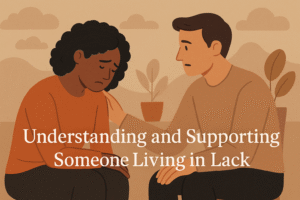You might recognise this…
You’re planning a short break. You see the hotel costs €170. That’s when it starts.
“We can afford it.”
“Can we really afford it though?”
“That’s money we could’ve put toward the credit card.”
“What if we keep spending like this? What if we never catch up?”
Suddenly, you’re 10 years in the future, imagining a house sold, kids struggling, and a version of you filled with regret.
If that sounds familiar, you’re not alone. For men — especially dads — the pressure to provide, plan, and protect can turn a small trigger into a full-blown emotional spiral. One moment you’re deciding on dinner. The next, you’re catastrophising your financial future.
This is overwhelm. And when left unmanaged, it can lead to decision fatigue, burnout, anxiety, and emotional distance from the people who need us most.
But here’s the good news: you can spot it. You can stop it. And you can take back control.
🚨 The Scenario: From One Domino to a Collapse
Let’s unpack a real-world example.
“I saw the price for a hotel; €170. Straight away I told myself it’s fine, we can afford it. Then – bam – another voice: ‘We can’t afford it, ffs!’ Suddenly, I’m thinking about credit card debt, mortgages, missed payments, and an email I once read from a woman who regrets how she handled money years ago. I spiral into this whole ‘we’ll be struggling in 10 years’ scenario. And all from a hotel room price.”
Sound familiar?
This is what a live overwhelm spiral looks like:
- A small trigger
- A conflict of thoughts
- A fear reaction
- A reference memory or emotional anchor
- A jump to the worst-case scenario
You don’t plan for it. You just find yourself in it. And often, by the time you realise, you’ve already felt the emotions — stress, guilt, shame, anxiety — before the logic can catch up.
✅ Step 1: Spot the Signs (Recognition)
The first win in managing overwhelm is noticing when it’s happening. Most men don’t even realise they’re overwhelmed until they’re irritable, withdrawn, or completely mentally checked out.
Here’s what to look for:
- You go from calm to on-edge without a clear reason
- A small situation spirals into an imagined disaster
- Your thoughts feel stacked, fast, or like they’re racing ahead
- You can’t easily “snap out of it” or focus on the present
- You start talking in absolutes: “We always mess this up”, “It’s all on me”, “We’ll never recover from this”
These are signs that the brain’s threat response has taken over.
🕵️♂️ Step 2: Break the Loop (Name & Box It)
Overwhelm grows in the shadows. Naming it shines a light on the process and slows it down.
Here’s how you do it:
✏️ Write down or say:
| Step | Thought Layer | Example |
| 1️⃣ | Trigger | €170 hotel room |
| 2️⃣ | Fear | We can’t afford it |
| 3️⃣ | Stacked Worry | We’ve already got debt |
| 4️⃣ | Emotional Anchor | That regretful email from someone |
| 5️⃣ | Catastrophe | We’ll end up struggling forever |
When you box the spiral like this, you create separation between what happened and what you fear. That alone can slow down your emotional brain.
🧭 Step 3: Ask 3 Reset Questions
These three questions act like a mental brake. Use them in your notes app, journal, or just say them in the moment:
- “What do I know to be true right now?”
– e.g. “We haven’t missed a payment. I’m looking after things day to day.” - “What story am I telling myself?”
– e.g. “That this one expense means we’re financially reckless.” - “What’s actually in my control today?”
– e.g. “Tracking my spending, discussing it calmly, not future-tripping.”
This pulls your mind away from imagined futures and back into the present, where you actually have influence.
🧘 Step 4: Reset Physically
Overwhelm isn’t just in your head — it shows up in your body.
When stress floods your system, you get tunnel vision, shallow breath, irritability, and that uncomfortable “buzzing” energy. You cannot think clearly until you change your physical state.
Here’s how:
- Breathing reset:
Inhale for 4 seconds, exhale for 6 seconds. Repeat 4x. This tells your nervous system: “Stand down. I’m safe.” - Water or movement:
Cold water on your face or neck, a short walk, stairs, or even 10 pushups. - Interrupt the loop with a phrase:
Try:
“This is a moment — not my future.”
“It’s a story, not a prophecy.”
You can’t logic your way out of a spiral until you reset the body first.
🔄 Step 5: Reframe & Refocus
Once you’ve broken the loop, it’s time to build a better one.
Instead of thinking:
“We’re screwed financially.”
Try:
“We’re navigating our finances with more awareness now.”
Instead of:
“I’ll end up full of regret.”
Try:
“We’re being intentional with choices today — and that’s enough.”
Your brain listens to the language you use, especially the inner dialogue you repeat most. Make that dialogue your ally.
And if you’re a dad: remember, your ability to stay calm in the chaos becomes a skill your children model. Learning how to manage overwhelm isn’t just self-help — it’s legacy work.
✋ Final Word: You’re Not Broken — You’re Wired This Way
Overwhelm doesn’t mean you’re weak. It means your brain is doing its job of scanning for threats. But in a world full of responsibilities, worries, and financial pressure, that system can overreact.
By recognising the signs, boxing the thoughts, and resetting your body and brain, you become a man — and a dad — who responds rather than reacts.
That’s leadership. That’s resilience. That’s what your family needs more than anything.
🔗 References and further support
https://hbr.org/2021/04/what-working-dads-can-do-when-a-high-pressure-job-asks-too-much
https://familybusiness.org/content/5-practical-tips-for-making-business-decisions-with-family-membe








